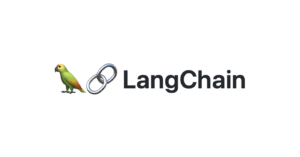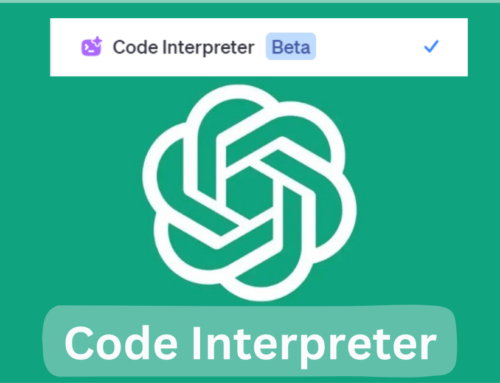Langchain is a powerful library that enables developers to create applications that communicate with large language model APIs. In this article, we will explore Lang chain’s features and capabilities, including getting started with Lang chain, creating a large language model object, obtaining an API key, sending a prompt to the language model, working with different GPT models, working with templates in Lang chain, creating and formatting prompts, and generating responses.
One of the key takeaways from this article is that Lang chain makes it easy to work with large language models, allowing developers to create sophisticated applications that can generate responses to complex prompts. Additionally, Lang chain provides developers with a range of tools and features, including support for different GPT models, templates, and formatted responses, making it a versatile and powerful library for building intelligent applications.
Key Takeaways
- Langchain is a powerful library for creating applications that communicate with large language model APIs.
- Langchain provides developers with a range of tools and features, including support for different GPT models, templates, and formatted responses, making it a versatile and powerful library for building intelligent applications.
- With Lang chain, developers can easily create sophisticated applications that can generate responses to complex prompts.
Lang Chain Overview
Lang Chain is a powerful library that enables developers to create applications that communicate with large language model APIs. It provides an easy-to-use interface for interacting with these models, allowing users to generate text, provide information, and more.
To get started with Lang Chain, users simply need to create a large language model object and call methods on it. This can be done by importing the desired API, such as OpenAI, and passing in the API key.
Lang Chain also supports working with templates, which allows users to insert variables into pre-defined phrases. Additionally, it offers output parsing capabilities, enabling users to format responses according to specific models.
Overall, Lang Chain is a versatile tool for working with language models and can be used in a variety of applications.
Getting Started with Lang Chain
Lang Chain is a great library for creating applications that communicate with large language model APIs. To get started, one simply needs to create a large language model object and then call methods on it. In order to interact with a large language model like the one from OpenAI, an API key is required. It’s easy to get an API key by creating an account at OpenAI or any of the other competitors. However, as the key is used more and more, it will cost money because tokens will be charged for the requests from the service.
To create the llm large language model object for OpenAI, simply import it from Lang Chain from the RMS and pass it the OpenAI key. Then, a prompt can be sent to the large language model and the results can be printed.

Lang Chain also supports templates, which can be used to provide information about a specific topic, such as a country. In order to use templates, a couple of imports are required, including d_human_message_prompt_templates and the chat prompt template class. The process involves creating a human prompt message from a template, generating a chat prompt, formatting the prompts, and then converting them back into messages that the large language model can deal with.
Lang Chain also allows for output formatting instructions to be supplied to the models, such as returning a response as JSON data. This can be useful when combining Lang Chain with other tools, such as Pedantic. To use Pedantic, a Pedantic model and field are required, and a Pedantic output parser can be used to create formatted responses according to the model.
Creating a Large Language Model Object
To get started with Lang chain, one needs to create a large language model object. This can be done easily by importing the necessary modules and calling methods on the object. For instance, to work with the OpenAI API, one can create an LLM object by importing it from Lang chain and passing the OpenAI key. After creating the LLM object, one can send a prompt to it and get a result.
It is important to note that working with large language models like OpenAI requires an API key, which can be obtained by creating an account on the OpenAI website or any of its competitors. As one uses the key more often, it incurs a cost as one is charged for the tokens requested from the service.
For newer models like GPT 3.5 or DPT4, one needs to use a chat model which has a slightly different interface in Lang chain. To work with templates, one can create prompts using human message prompt templates and chat prompt templates.
Lang chain also allows for output formatting instructions to be supplied to the models. The pedantic output parser can be used to create formatted responses according to a specified model.
Obtaining an API Key
To use Lang chain and interact with large language model APIs, an API key is required. The process of obtaining an API key is simple and straightforward. Users can create an account at OpenAI or any of the other competitors and then access the web-based interface to obtain an API key. It is important to note that as the key is used more and more, users will be charged for the tokens requested from the service.
In order to create a large language model object, users can simply import it from Lang chain and then call methods on it. For OpenAI, the llm object can be created by importing openAI from the RMS and passing it the OpenAI key. Once the llm object is created, users can send a prompt to the large language model and get a result.
For newer models like GPT 3.5 or DPT4, users will need to use a chat model with a slightly different interface in Lang chain. To do this, users can import chat open AI from langchain.job.models and create a chat open AI model. The API key and model name can be supplied to the model as arguments.
Lang chain also allows users to work with templates by creating prompts with inserted values. Users can create human prompt messages from templates and generate chat prompts for multiple messages. By using a chat prompt, users can format multiple prompts at once and then convert them into messages that the large language model can deal with.
Finally, Lang chain can be combined with pedantic to create formatted responses according to a model. Users can create a pedantic model with a field for the desired output and supply it to the pedantic output parser. The llm object and parser can then be used to extend the prompt and create the formatted response.
Sending a Prompt to the Language Model
To get started with Lang chain, one can create a large language model object and call methods on it. For example, one can send a prompt and get a result. To do this, one needs an API key, which can be obtained by creating an account with OpenAI or any of its competitors. As one uses the key more and more, it will cost money because tokens are charged for requests from the service.
To create the large language model object, one can import it from Lang chain and then create the object. For OpenAI, the llm object is created as openai and the API key is passed to it. Then, one can send a prompt to the large language model and print the results.
If one wants to use newer models like GPT 3.5 or DPT4, one needs to use a chat model which has a slightly different interface in Lang chain. To do this, one can import the chat open AI model from Lang chain and create a chat open AI model. The model name can be supplied along with the API key.
Lang chain also allows working with templates. To use templates, one needs to import d human message prompt templates and the chat prompt template class. Then, one can create the human prompt message from a template and generate the chat prompt. The messages are supplied and formatted all at once by doing a single call. Finally, one can print the response.
Lang chain also allows supplying output formatting instructions to the models. One can instruct the large language model to return a response as JSON data, which can be parsed and used in one’s own code. To do this, one can combine Lang chain with Pedantic. One can create a Pedantic model and a field, and then create a parser using the Pedantic output parser. Then, one can create a prompt and send it to the large language model. The parser will format the response according to the model.
Working with Different GPT Models
Langchain is a powerful library that allows developers to interact with large language model APIs. To get started with Lang chain, one simply needs to create a large language model object and call methods on it. For instance, one can send a prompt and get a result by creating an LLM object and passing it the OpenAI API key.
However, it is important to note that Lang chain works with different GPT models, and the latest GPT model from OpenAI requires the use of a chat model with a slightly different interface. To work with the latest GPT models, one can import the chat open AI model from Lang chain and create a chat open AI model object, which can be passed the API key and the desired model name.
Lang chain also allows developers to work with templates, such as human message prompt templates and chat prompt templates. By creating a prompt object using a human message prompt template, and then generating a chat prompt using a chat prompt template, one can format prompts and messages and send them to the large language model. Additionally, Lang chain allows developers to supply output formatting instructions to the model, such as requesting a response as JSON data, which can be parsed and used in their own code.
To illustrate this, one can combine Lang chain with Pedantic to create a Pedantic model and a Pedantic output parser, which allows for formatted responses according to the model. By creating a Pedantic object and a Pedantic output parser, and passing them to the Lang chain LLM object, one can generate responses that conform to the model’s fields and descriptions.
Working with Templates in Lang Chain
Lang chain offers the ability to work with templates, which can be a powerful tool for generating responses from large language models. By using templates, users can insert specific information into a pre-defined structure, allowing for more tailored and efficient communication with the model.
To work with templates in Lang Chain, users must first import the necessary modules, including d_human_message_prompt_templates and chat_prompt_template. Once these modules are imported, users can create a prompt object using the human_message_prompt_template and a chat prompt using the chat_prompt_template.
After creating the prompts, users can format them with the necessary information and then convert them into messages that the large language model can understand. This allows for more flexibility in generating responses from the model.
Additionally, Lang Chain offers the ability to supply output formatting instructions to the model, such as returning responses as JSON data. By combining Lang Chain with other tools such as pedantic, users can create formatted responses according to specific models, allowing for even more tailored and efficient communication with the model.
Creating and Formatting Prompts
Lang chain allows for easy creation of prompts for large language model APIs. To get started, one must create a large language model object and call methods on it.
When using open AI, the llm object can be created by importing it from Lang chain and passing it the open AI API key. Once created, prompts can be sent to the large language model and the results can be printed.
For newer models like GPT 3.5 or GPT4, a chat model interface must be used instead. This can be done by importing the chat open AI model from Lang chain and passing it the API key and model name.
Templates can also be used with Lang chain to provide more flexibility in prompts. The human message prompt template and chat prompt template classes can be imported from Lang chain to create and format messages.
To format output, Lang chain can be combined with pedantic and the pedantic output parser. This allows for formatted responses according to a model’s specifications, such as getting the capital of a country.
Overall, Lang chain provides a user-friendly interface for creating and formatting prompts for large language model APIs.
Generating Responses
Lang chain is a library that allows developers to create applications that communicate with large language model APIs. To get started with Lang chain, one simply needs to create a large language model object and call methods on it.
For example, to use the OpenAI API, one must create an LLM object and pass it the OpenAI API key. Once this is done, a prompt can be sent to the large language model and the results can be printed.
Lang chain also allows developers to work with templates. By creating a prompt template, developers can insert variables into a prompt and generate messages to send to a chatbot.
Lang chain also supports output formatting instructions, such as JSON data. By combining Lang chain with pedantic, developers can create formatted responses according to a specific model.
Creating Formatted Responses with Pedantic
Lang chain provides a powerful tool for working with large language models and APIs. To get started, users can create a large language model object and call methods on it. For example, users can send a prompt and get a result.
Lang chain also supports working with templates, which provide flexibility for generating responses. Users can create prompts using human message prompt templates and chat prompt templates. These templates allow users to insert information such as country names and generate responses based on that information.
To format responses according to a specific model, users can combine Lang chain with pedantic. By creating a pedantic model with specific fields, such as a country’s capital, users can use the pedantic output parser to generate formatted responses. This allows for easier parsing and use of the response data in user code.
Calling an API with LangChain
Lang Chain is a library that enables the creation of applications that communicate with large language model APIs. Getting started with Lang Chain is easy. To create a large language model object, one simply needs to import it from Lang Chain and pass the API key.
If one wants to interact with a large language model like the one from OpenAI, for example, they will need an API key. This can be obtained by creating an account at OpenAI or any of the other competitors. It is important to note that as the key is used more and more, it will cost money because the user will be charged for the tokens they request from the service.
Once the large language model object has been created, methods can be called on it. For example, a prompt can be sent and then the result can be obtained.
Lang Chain also supports templates, which provide more flexibility. Templates can be used to create prompts that can be formatted all at once by doing a single call. The templates that Lang Chain supports include human messages and system messages.
Output formatting instructions can be supplied to the models by instructing the large language model to return a response as JSON data. This can be parsed and used in one’s own code. Lang Chain can be combined with pedantic to create formatted responses according to a specific model.






Leave A Comment